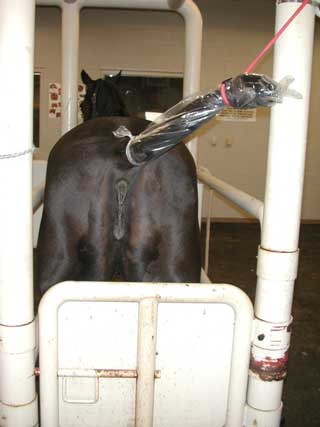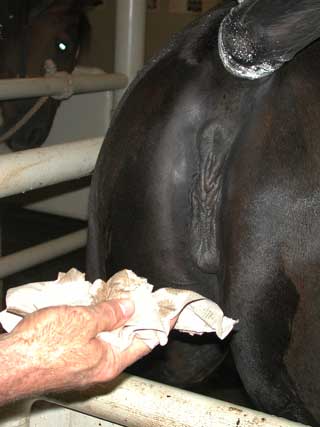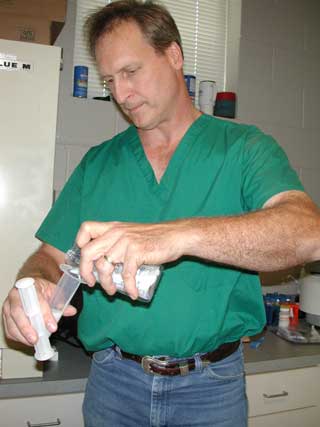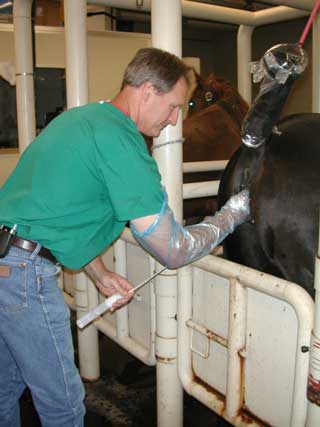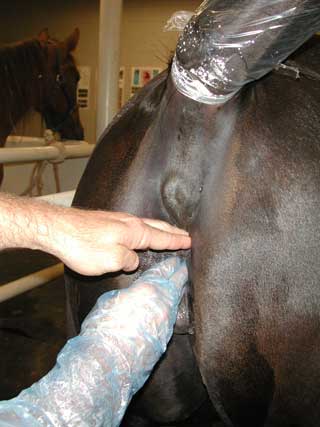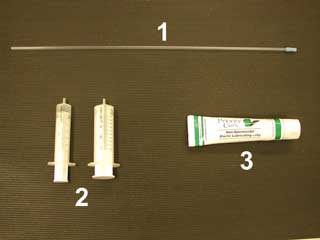Introduction: Successful artificial insemination can be summed up in the
following sentence: artificial insemination is most successful when at least 500
million normal, progressively motile sperm are deposited into the mare’s uterus
within 48 hours before or 6 hours after ovulation. In order to accomplish this
task, great attention must be paid to the small details that make the procedure
successful. It is important to remember that aside from the expense and training
necessary to do a satisfactory job, the primary disadvantage of AI to other
methods, such as live cover or even pasture breeding, is that a job poorly done
will severely decrease the chances of getting a mare in foal.
The following is a brief explanation of the artificial insemination procedure
for horses. It is important that every individual wanting to perform this
procedure should first seek assistance and training from a veterinarian or a
collegiate horse science program or course. If any of the following
procedures are done improperly, the health and reproductive future of the mare
may be greatly compromised.
